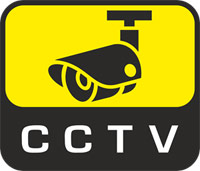Waitarere Beach
Waitarere is a small coastal settlement with a resident population of 600 people that swells to about 2,000 during the height of summer.
There are many holiday homes in the area. Just 10 minutes north of Levin, the beach is a part of New Zealand’s largest dune-field, stretching 200 km from Paekakariki to Patea, north-west of Wanganui.
Surfing and fishing at Waitarere Beach
During summer many people holiday at Waitarere Beach to surf, swim or head to their favourite fishing spot. Land yachting is also a pastime for some. It is one of the few beaches in the country where you are permitted to drive to your chosen fishing or picnic spot. This is a privilege that can be withdrawn if abused. Refer to our Visitor Information page.
A 30kph speed restriction covers the beach entrance roads and 2.6km of beach in front of the township. This limit is strictly enforced. The sand dunes, beachfront reserve and the mudflats are “protected areas” and people can be fined for driving in these areas.
History of Waitarere
Waitarere (referred locally as the Village) takes its name from a no-longer present 1850’s Flour-Mill situated 4.6 kilometers inland from the beach. The mill, built under the direction of a French Roman Catholic priest (Father Comte) used a 2.5m fall of water to turn its wheel, which the then local Maori called ‘Wai-tārere’, meaning ‘copiously flowing waters’.
The place name is also spelt Waitārere. Father Comte was the first missionary in the Poroutawhao area. He was an engineer by trade and was also involved in local land development and wine making. His St Margaret’s Church overlooked the Waitarere settlement at Waitarere comer on State Highway 1.
The name of the beach itself however is Okatia Beach. Its name comes from a mythological Taniwha that formed Te Apiti (The Manawatu Gorge) and the Manawatu River, ending up on the beach. Maps printed in the 1800’s refered to this name. Over the years the name Waitarere has been used in reference to both the Village and the beach. Waitarere Beach was established in 1936.
From 1920 to 1940. there was a massive development in farming and forestry. Waitarere Beach became a seaside resort as well as a forestry centre. The settlement and the manure factory at Waitarere corner vanished. Good farming practice and forestry transformed the area to a fertile productive place. More sub-division brought more people to Waitarere as permanent residents.
Waitarere Forest
Waitarere Forest was established in 1936 with the aim of protecting Inland farmland as well as providing an employment drive during the Depression. For some 20 years the Levin Joggers and Walkers Club has co-ordinated the Waitarere Great Forest Marathon, now called the Great Forest Events and attracts thousands of people to the forest each year to participate in
running or walking distances of 5km to a full marathon.
In June 1878, the square-rigged ship Hydrabad, bound from Lyttelton to Adelaide was struck by a severe storm, and deliberately drove onto Waitarere Beach. All Crew survived and though inundated with sand the Hydrabad can just be seen on the beach today. There was an attempt in 1879 to re-float her. You can read about this (in old english) from a newspaper at the time.
Also view images of the wreck taken in 1905. -Source information from National Library of New Zealand.
A stone cairn with a commemorative plaque can be viewed at the entrance to the Surf Lifesaving Club car park.
Holmwood Park
Holmwood Park was named in commemoration of Captain Charles Holmwood who successfully drove the Hydrabad onto the beach without any loss of life. Captain Holmwood remained in New Zealand and settled on a 73 hectare farm named “Bushcroft” at Opaki near Masterton and died aged 83 years in 1918.
Surf Lifesaving Club
The Waitarere Beach Surf Lifesaving Club members patrol the area in front of the Surf Club in summer and volunteer Beach Wardens patrol the beach all year round to ensure public safety.
Waitarere Beach village amenities
Waitarere Beach village has amenities including a Lawn Bowling Club tennis court, which also serves as the local watering hole, a Fishing Club, two Motor camps, Bed & Breakfast facilities, baches and houses to let, a Four Square General Store plus several Cafes and “takeaway” outlets.
Horowhenua Visitor Information Booklet


